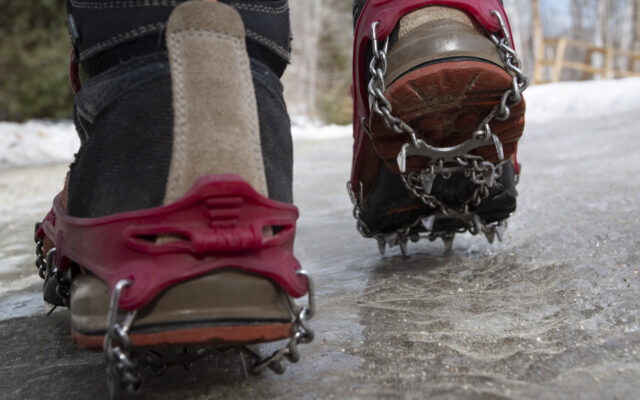
The must-have accessory for braving Maine’s icy winters
By Aislinn Sarnacki
Bangor Daily News Staff
During the winter in Maine, given the right conditions, ice coats pretty much everything. Driveways turn into ice rinks. Walkways become toboggan chutes. Outdoor staircases look more like frozen waterfalls. It’s just a part of living in this beautiful state.
You have to learn to live with it. And no matter how sure-footed you are, ice can be your undoing. Anyone can fall on ice. And boy does it hurt.
Luckily, there’s a simple solution: ice cleats. In terms of important winter accessories, they’re right up there with a shovel and ice scraper. Designed to fasten onto the bottom of your boots, ice cleats come in many varieties — and prices.
Usually ice cleats feature small, metal spikes that bite into the ice, making it easy to gain traction. But some designs feature metal coils rather than spikes. Also, how the cleats fasten onto the boot differs widely. Some designs are made of rubber that stretches around the sole of the boot, while others are made of hard plastic, metal chains, fabric webbing, velcro or a combination. With so many options available, it’s best to shop around to decide what will work best for you.
For people who hike, ice fish and do other outdoor activities in the winter, ice cleats are especially important. On March 3, a hiker slipped down an icy cliff face in Acadia National Park and was rescued by helicopter. He wasn’t wearing ice cleats, which might have helped him in that situation.
But it’s not just recreationists who could benefit from wearing ice cleats. Every winter, hundreds of Maine workers are injured by slipping and falling on ice, according to data collected by the Maine Workers’ Compensation Board.
In Maine, there’s often less snow — and more exposed ice — in the south and along the coast; however, this may not always hold true depending on snow storm patterns. Ice also tends to form when temperatures fluctuate, rising above freezing and causing the snow to melt, then dipping back down. And when rain or sleet falls on snow and ice, then freezes, the ice can be particularly slippery.
In one form or another, ice cleats — also known as crampons, grippers and traction devices — have been around for a long time. Some of the oldest ice cleat artifacts are over 1,000 years old and were found at the site of a Viking city in Sweden. In Maine and throughout the Northeast, there is evidence that ice cleats were used by early settlers and adopted by the native tribes they established trade with.
Whether you’re walking to your mailbox or along a rocky hiking trail, wearing ice cleats could be a major game changer during icy times, increasing your safety and confidence. Just don’t wear them indoors on the nice hardwood floors.